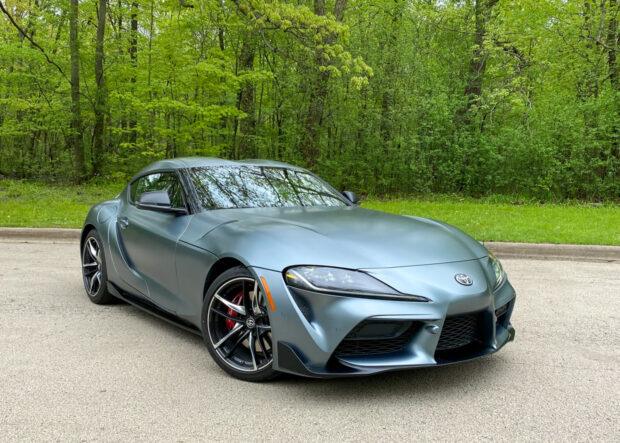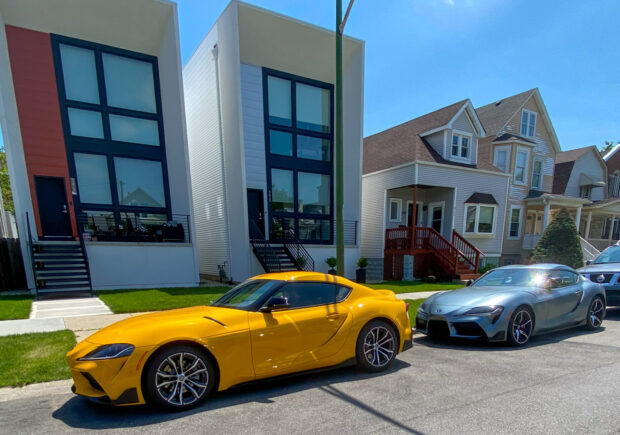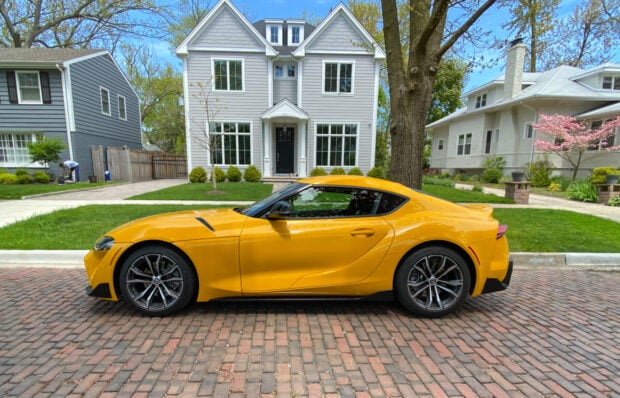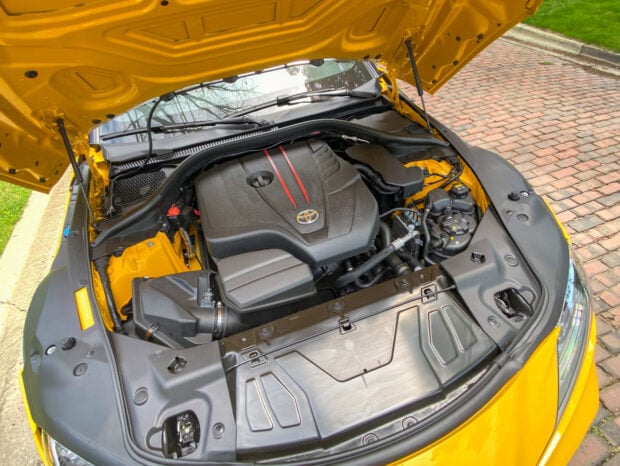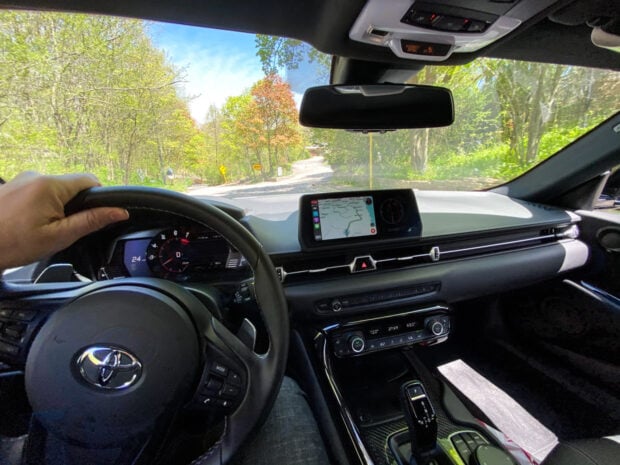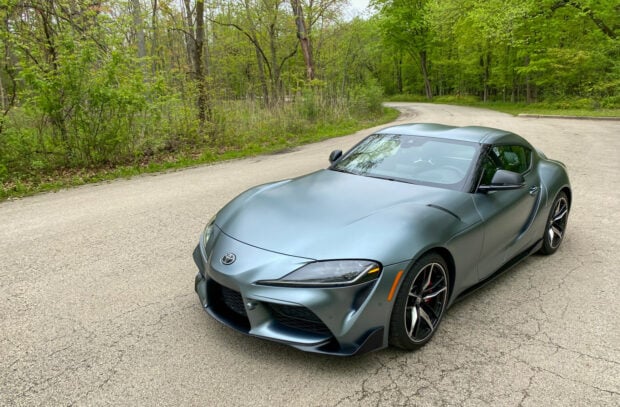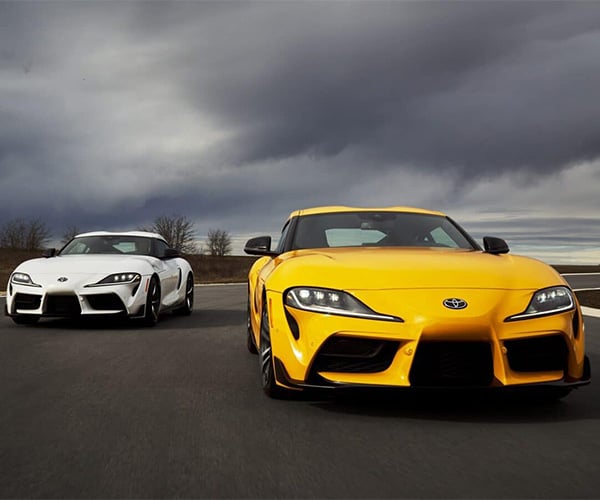2021 Toyota GR Supra 3.0 and 2.0 Review: More Speed, More Choice, and More Fun
2021 | toyota | toyota supra
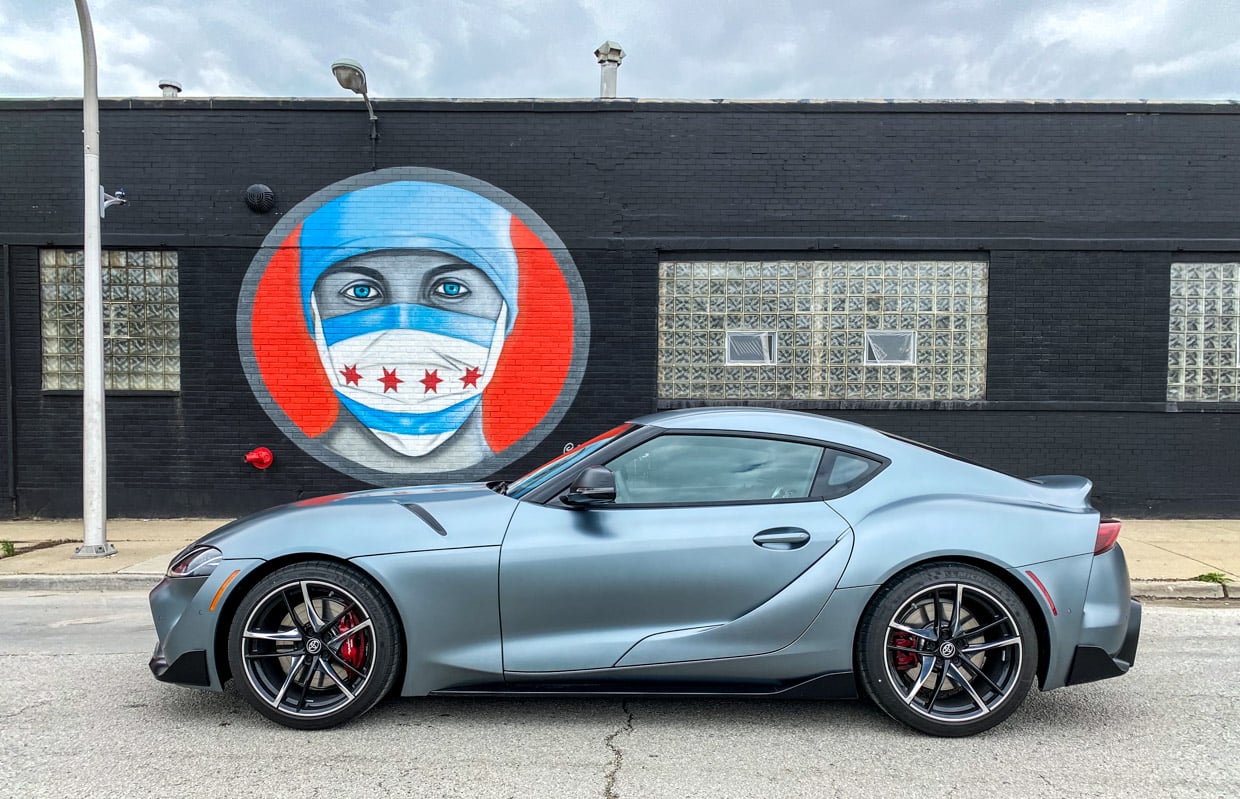
- Horsepower: 382 (3.0) / 255 (2.0)
- Torque (lb-ft.): 368 (3.0) / 295 (2.0)
- Transmission: 8-speed automatic
- Drive Configuration: RWD
- 0-to-60 Time (secs): 3.9 (3.0) / 5.0 (2.0)
- Top Speed (mph): 155
- City/Hwy/Combined MPG: 22/30/25 (3.0) / TBD (2.0)
- Curb Weight (lb): 3400 (3.0) / 3181 (2.0)
- Wheelbase (in): 97.2
- Total Length (in): 172.5
- Width (in): 73.0
- Base Price (USD): TBA
2021 Toyota Supra GR 3.0 and 2.0
It’s not often that a car company releases a hotly-anticipated car, and then makes big changes to it just one year into its lifecycle. But that’s exactly what Toyota did with the GR Supra. After releasing the BMW Z4 based A90 Supra edition last year, the sporty 2-seat coupe is back, with the 3.0-liter version getting a big power upgrade, along with a brand new 2.0-liter that’s zippy, tossable, and considerably more affordable. The end result – two great looking, fun to drive sports cars, and more choice for buyers.
First and foremost, the turbocharged inline six-cylinder engine found in all 2021 Supras now makes 385 horsepower and 368 lb-ft of torque exclusively to the rear wheels. That’s a significant 15% upgrade in horsepower (up from 335 last year), and a modest 1% increase in torque (vs. 365 in 2020.) Rather than just being an ECU programming change, Toyota and BMW swapped out the exhaust manifold to a more traditional 6-port design, refined the piston design, and lowered the engine’s compression ratio. The result is a car that’s 2-tenths faster zooming from 0-to-60 mph (3.9 seconds official time). As I mashed my foot on the gas, the 2021 3.0 Supra took off like a shot, with absolutely zero turbo lag, in part thanks to its whipsmart eight-speed automatic transmission from ZF that’s practically a mind reader. Sadly, a manual transmission is still not an option on the Supra.
Engine changes aren’t the only immediately noticeable upgrades in the 3.0 model. New cross-bracing under the hood, along with refined tuning for the electric power steering, vehicle stability control, and active rear diff make the new car that much more stable when cornering. While the 2020 Supra deserved a 9.0 for handling, the 2021 would score a 9.5. It’s still able to let the tail hang out and drift when you turn off the traction control, but with the technological nannies enabled, it just feels a touch more predictable and precise this time out.
Besides the performance changes, there aren’t any aesthetic differences this year. As I typed that, I realized it’s possibly the only time I’ve ever been able to say that as an automotive reviewer. Yep. Performance upgrades to a sports car actually took precedence to cosmetic upgrades, and that’s a welcome change. Now, I have a theory that BMW probably had a hold-back that kept the faster engine exclusive to the Z4 for 2020, but now that Toyota can have it too, the Supra is just that much better.
With all of the added oomph under the hood of the Supra 3.0, you’d think that was the big story here, but the arrival of a turbo-4 model might be even more of a gamechanger. The 2.0 model’s inline-4 makes 255 horsepower and 295 lb-ft. of torque, which is certainly enough power to make things fun. Coupled with a 219-pound weight loss, the 2.0 feels lighter on its toes, darting about more like a souped-up Miata than its weightier brother. A 0-to-60 time of 5.0 seconds isn’t exactly slow, and once you’re up and going, both cars have the same (electronically-limited) top speed of 155 mph.
The lightweighting of both the car and its sticker price also required the loss of the active rear diff and adaptive suspension, smaller 18″ wheels and brakes, manual seats, and a stripped-down 4 speaker audio system (vs. 10 or 12 in the 3.0), but when it comes to sports cars, less weight is almost always a good thing. While I missed the ability of the active damping to adjust to varying road conditions, Toyota’s engineers did a very good job coming up with a happy medium that’s agile, but not punishing for the 2.0. Perhaps on a track, I would have noticed the lack of the active diff, but in everyday driving, you’d be hard-pressed to. And despite having “just” 4 speakers, the audio system in the 2.0 is surprisingly good, with plenty of volume, and crisp, punchy sound.
In addition, the 2.0’s smaller engine means there’s more space under the hood for tuners to tinker with, and when it comes to Supras, that’s what fans want. Sure, there’s the tradition of the Supra’s inline-6, and more tech loaded into the 3.0, but the 2.0 is more of a purist’s sports car. It’s stripped down, and all about the driving. Its exhaust note isn’t as over-the-top, and its shocks aren’t tuned as firmly as the 3.0’s adaptive suspension in sports mode, but it’s still a heck of a lot of fun on the street.
I also prefer the Alcantara bucket seats in the interior of the 2.0 model and the entry-level 3.0, which has more of a technical look, and keeps you from sliding around more than the leather in the 3.0 Premium. That said, both interiors are clean, driver-focused, and nearly identical other than the seating surfaces, lack of power controls on the seats, and no available Qi charging dock or HUD for the 2.0. The less expensive model even keeps the real carbon fiber on the center console. The BMW-derived infotainment system is more modern and easier to use than the current Toyota system and has Apple CarPlay and Android Auto support.
While the exhaust note in the Supra has been artificially augmented inside of the cabin, there’s still plenty of auditory goodness to be enjoyed by those outside of the car. The 3.0 sounds just as awesome as it did in 2020. While the 2.0 isn’t quite as crackly or throaty as the 6-cylinder, it’s still satisfying and entertaining.
When it comes to sounds, the only disappointment I have with the Supra at all is that Toyota has yet to solve the annoying wind buffeting that happens inside the cabin when both windows are down. It’s most noticeable between 50 and 70 mph, meaning you can still enjoy sunny day driving on twisty mountain roads, but you’ll have to keep them up on the highway for sure. I suspect the issue has something to do with how air flows into the hatchback area, so maybe it could be fixed with some kind of aftermarket wind diffuser placed behind the cockpit. Hopefully, Toyota will come up with a fix for this in 2022.
While Toyota has yet to release pricing on the 2021 GR Supras (it should be forthcoming very soon), it’s expected that the 2.0 model will sell for substantially less than the 3.0 model, opening up the market to many more potential buyers. Both cars are excellent, quick, agile, and immensely enjoyable to drive. The two versions are virtually indistinguishable from the outside, giving 2.0 buyers an excellent opportunity to show off without spending as much, and saving on gas money too. On the flip side, if you absolutely must have the fastest Supra, the 3.0 model is the car for you. Either way, you won’t be disappointed.






